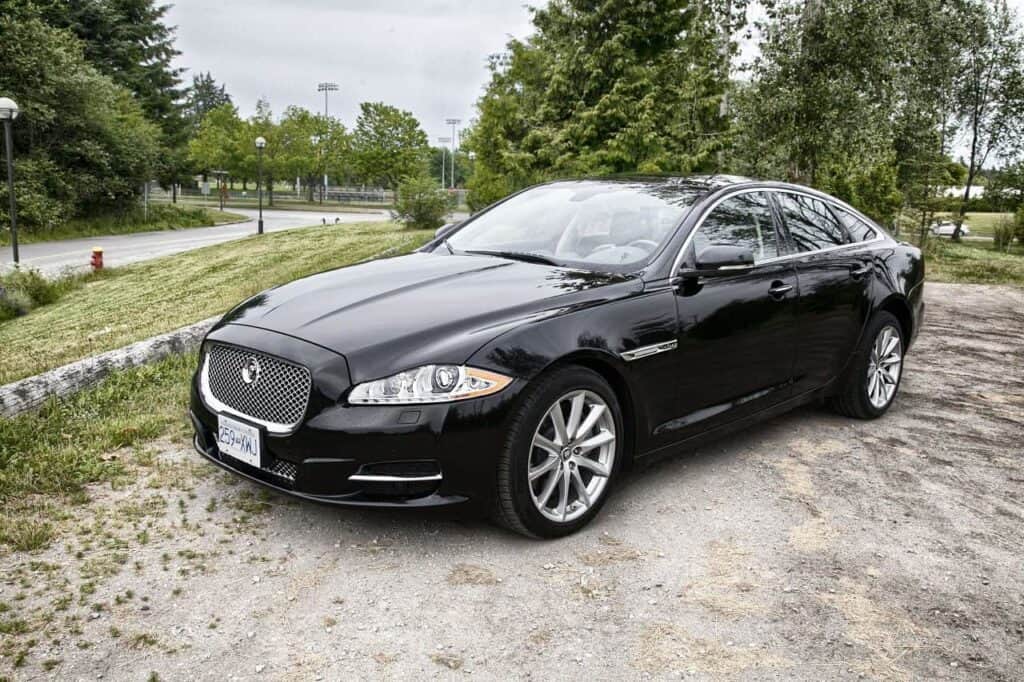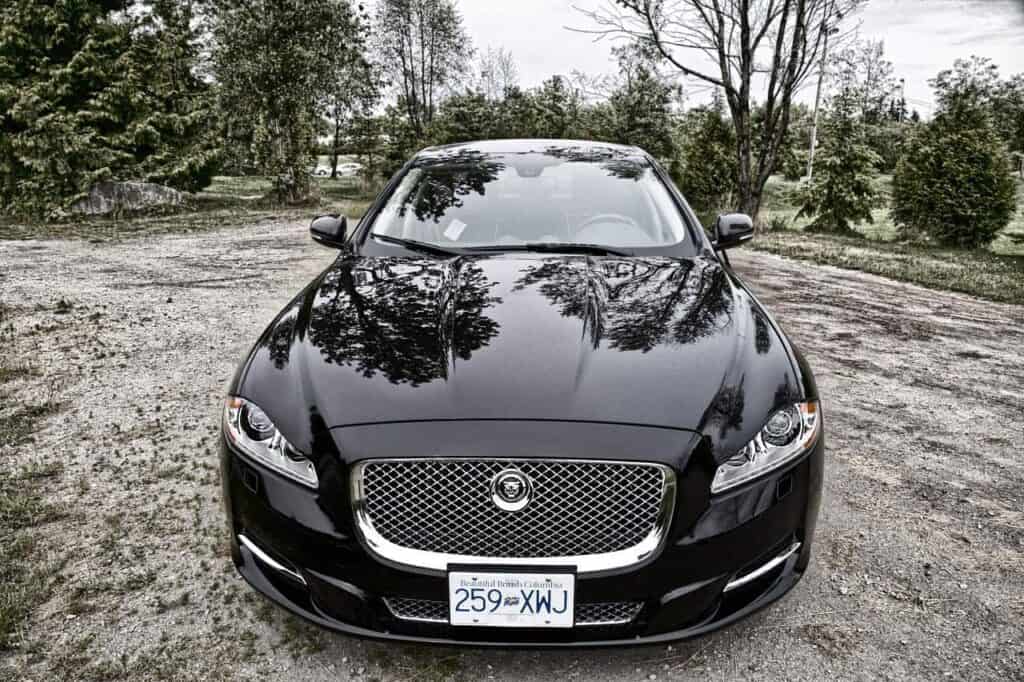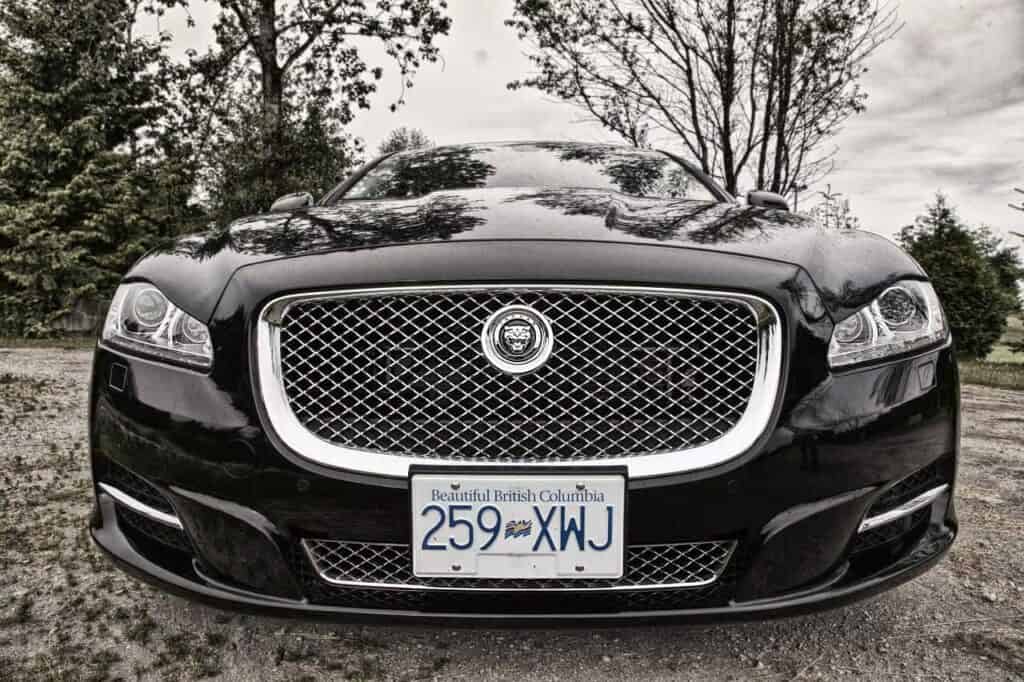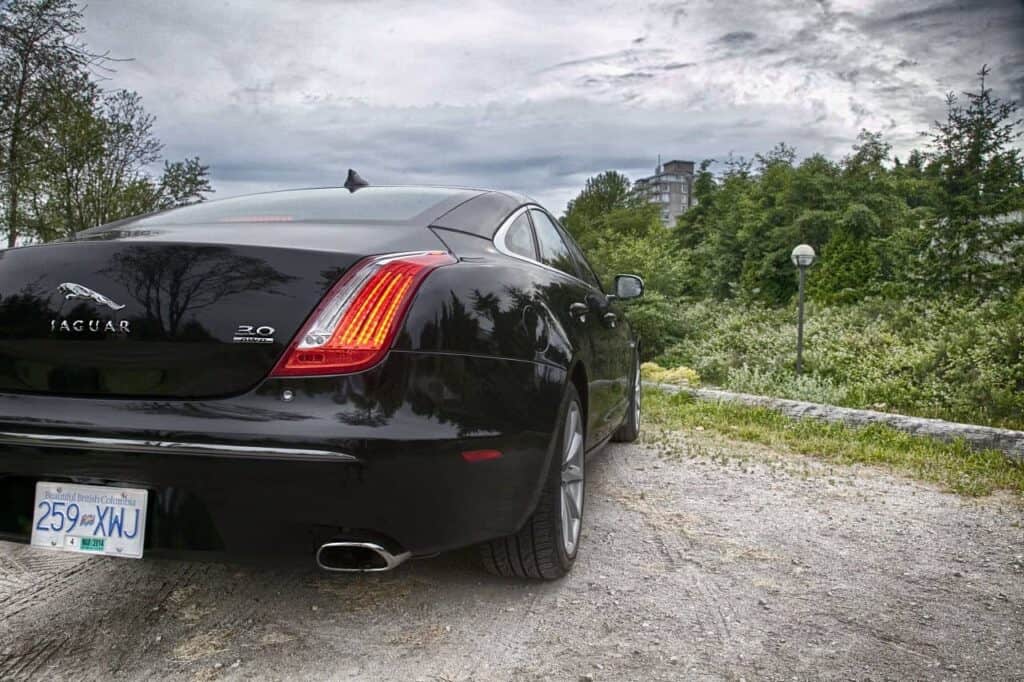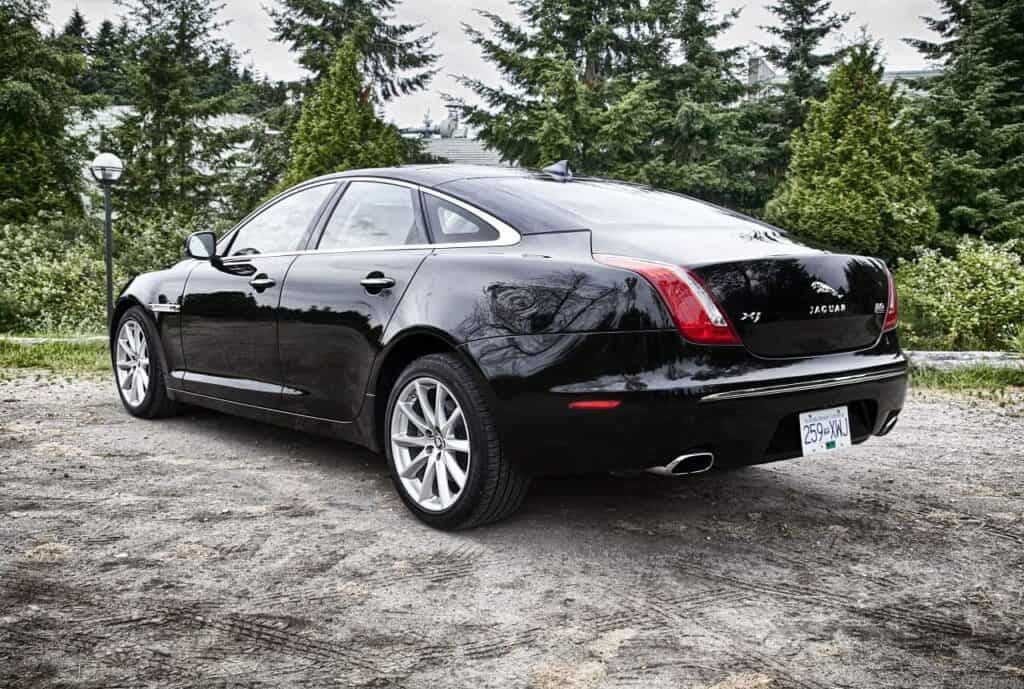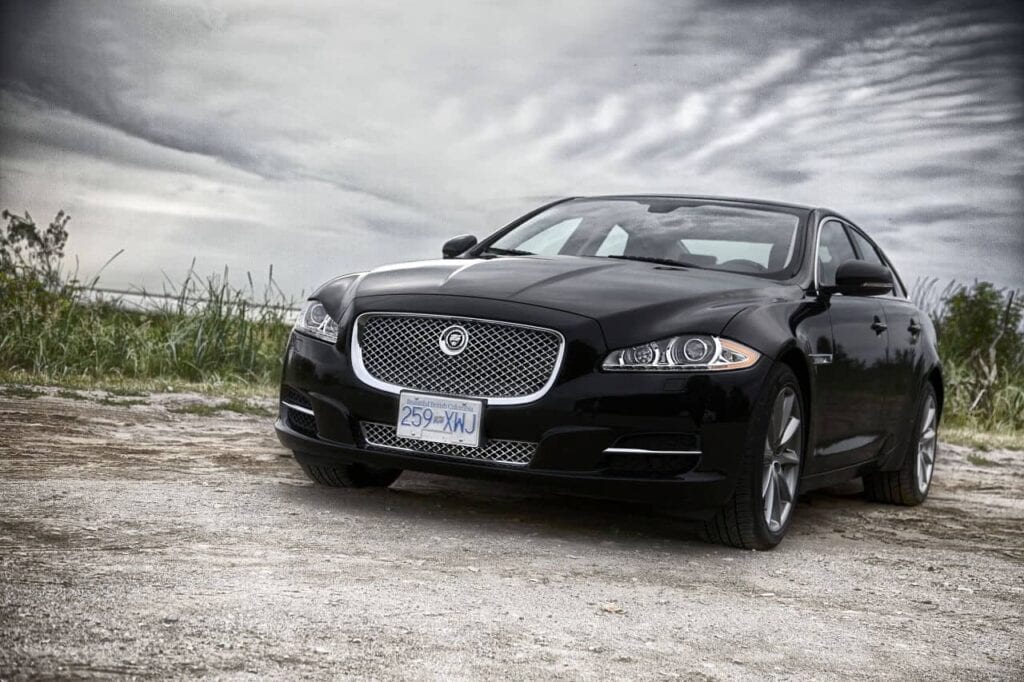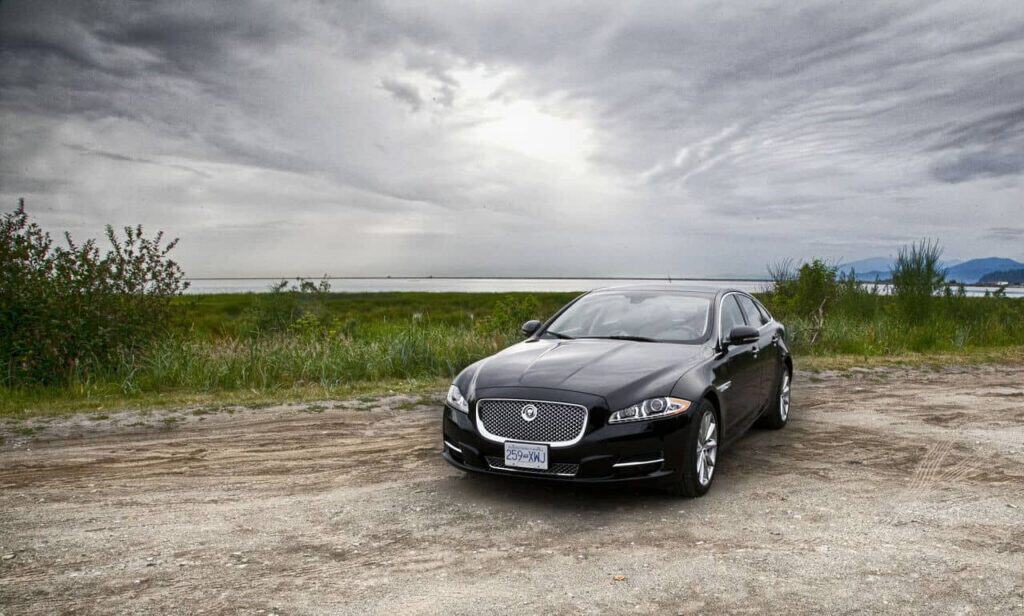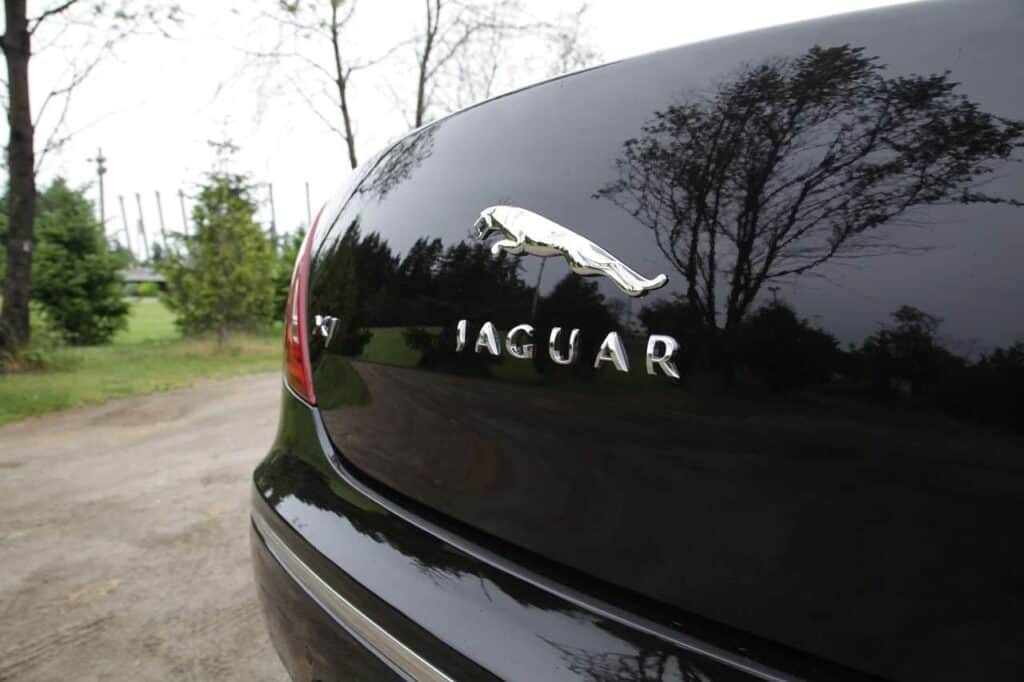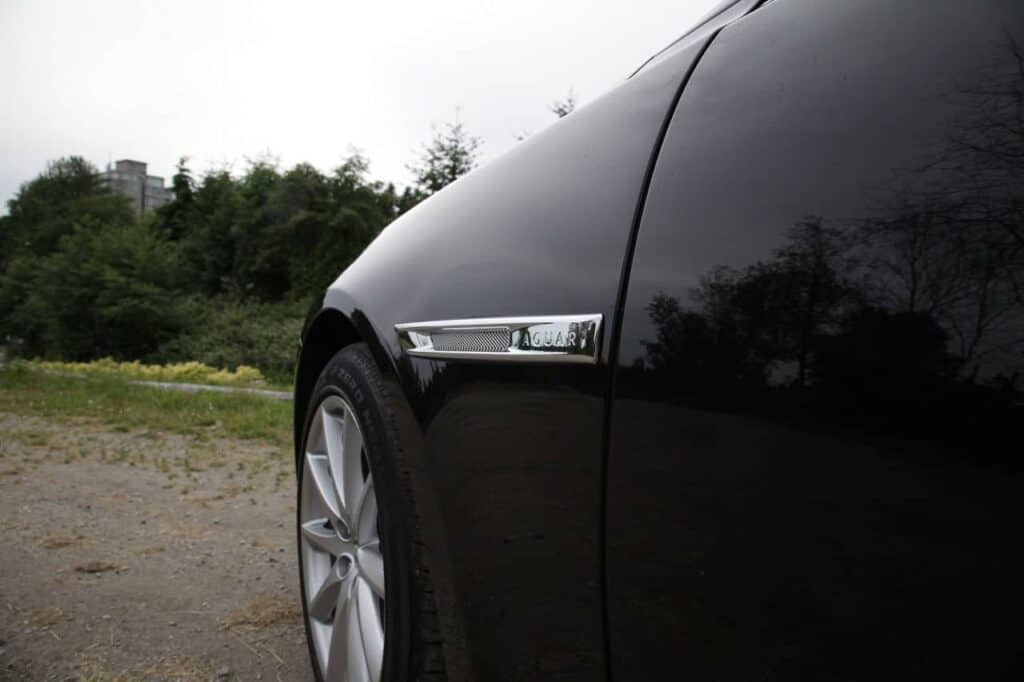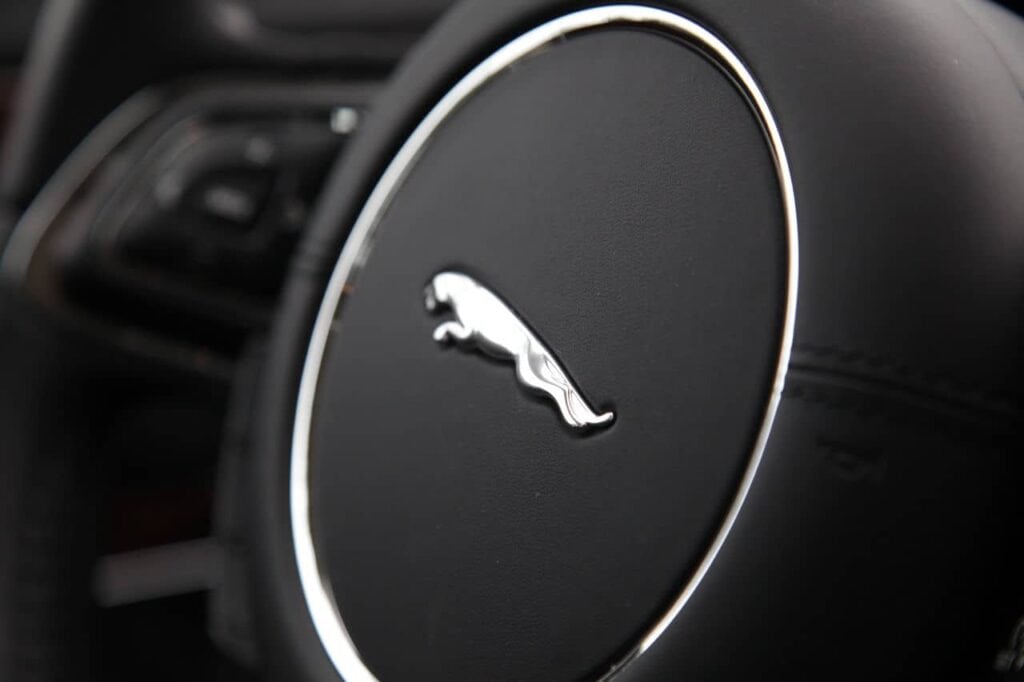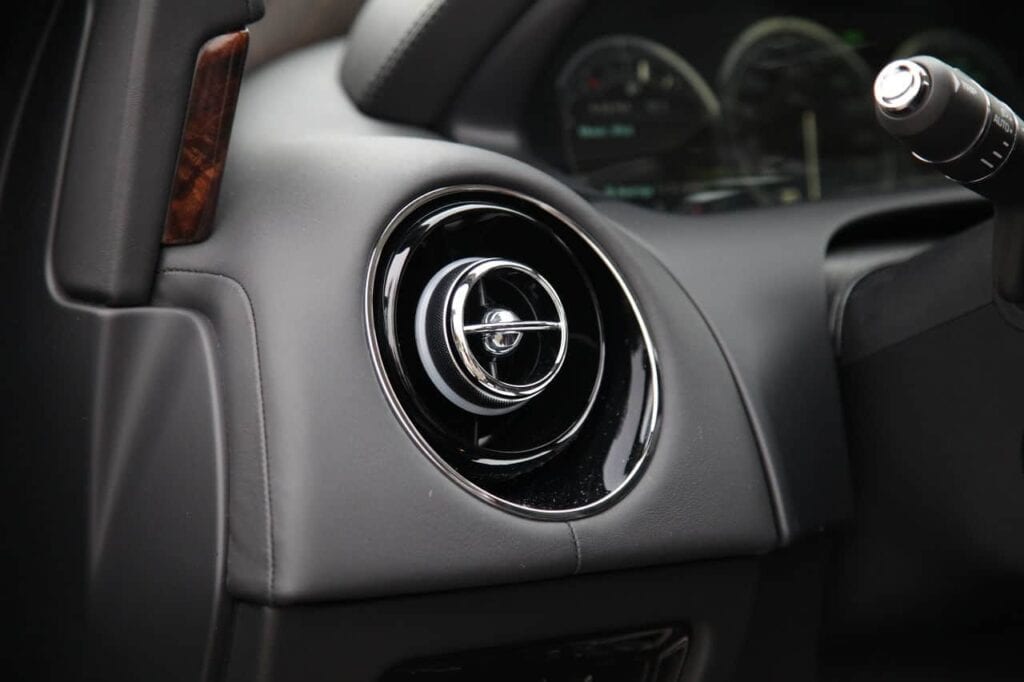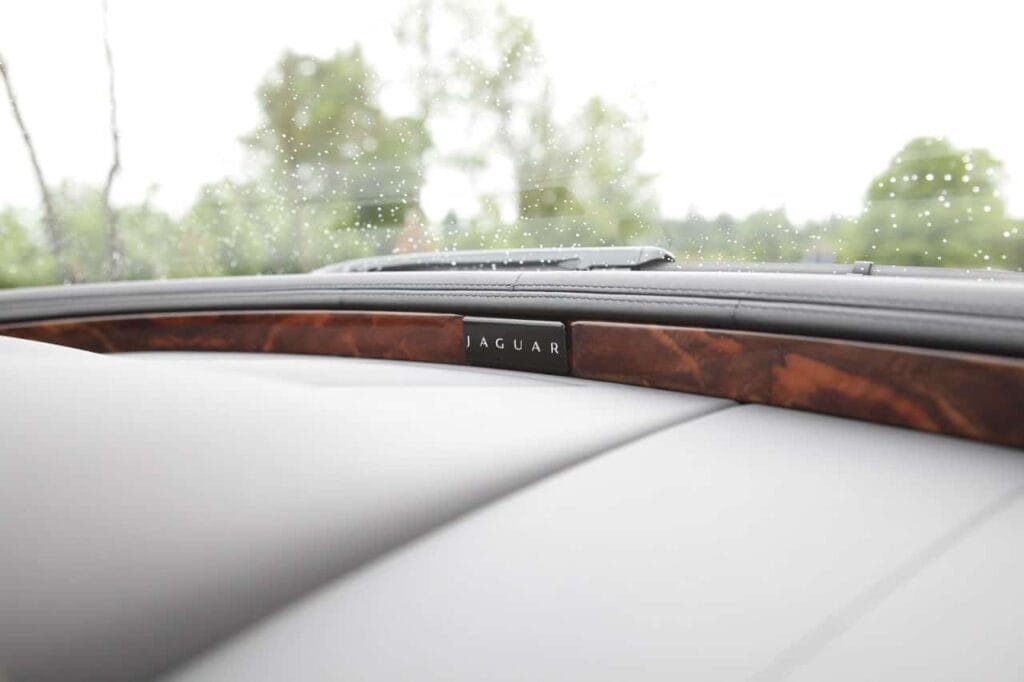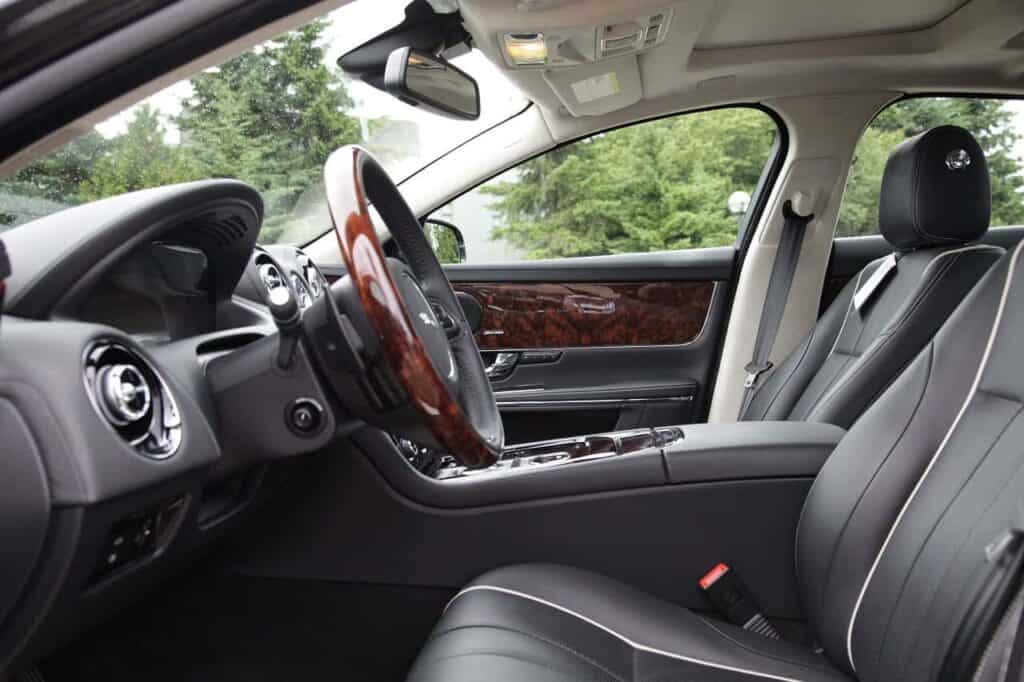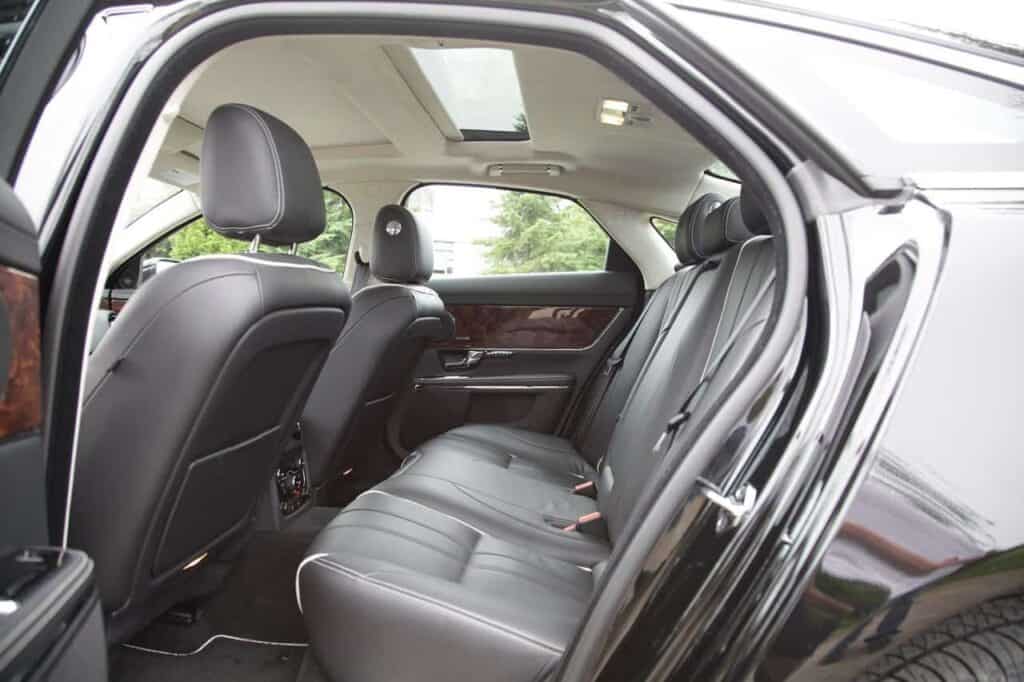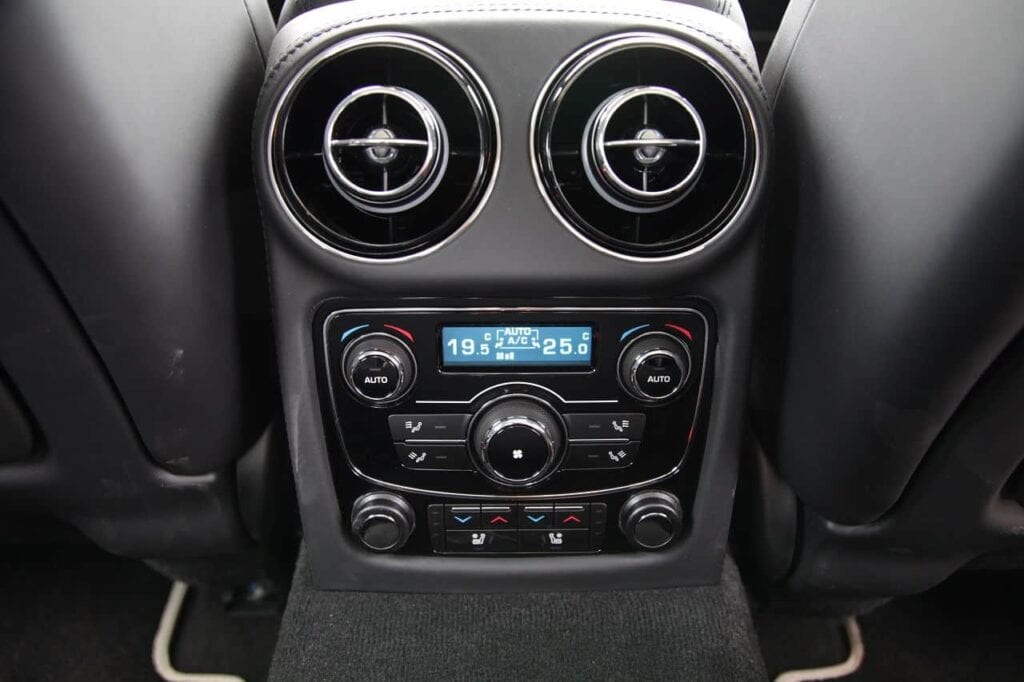This is my third review/test drive of the Jaguar XJ sedan, which happens to be one of my favorite luxury cars. I test drove the V8 powered XJ a couple of years ago, and the long wheelbase Jaguar XJL late last year (also V8 powered). This week I reviewed the all-new 2013 Jaguar XJ 3.0 AWD.
Unlike the two previous review XJs, the 2013 XJ we test drove came with a supercharged 3.0 liter V6 engine and all-wheel drive. This engine produces 340 horsepower and 332 pound-feet of torque, compared to the 5.0 liter V8 (which is still available) producing 385 HP and 388 pound-feet of torque. This Jag also opts for an AWD configuration over rear-wheel drive, sending power to all four wheels via an 8-speed automatic ZF transmission.
Thanks to government regulations and customer demand, although I doubt the latter, Jaguar had to introduce the V6 engine in the XJ lineup, for better fuel economy and emissions. On paper the V6 is 45 horses short of the V8 engine, but honestly, I didn’t feel that much of a difference between the two engines in terms of performance. The supercharged V6 pulls strong from a stop and has plenty of passing power on the highway, and you get to save some money at the pump.
So does that mean I like the supercharged V6 engine? The answer to that would be a resounding NO! The V6 is a nice engine but it’s no Jaguar V8, I just love the sound of Jaguar V8 engines and how smooth they are. When the V8 is started, it gives a distinct rumble, I could listen to that sound over and over again, and when you put the pedal down, the sound is pure muscle car. Unfortunately the V6 has nowhere near the same spine tingling effect on me, and the engine isn’t very smooth.
For 2013, Jaguar is also introducing a “stop-start” system, to save you money at the pump and reduce emissions. I think a stop-start system is a great idea because I do spend a lot of time stuck in traffic, but it’s only a good idea as long as it works so smoothly that you don’t even notice it. Again, that’s not the case here; the engine turning off and on is quite jerky and loud. This system would be acceptable in a mid-sized non-luxury car, not in a $100,000 luxury sedan. The system can be turned off, if it annoys you, but it always automatically turns back on after the engine is restarted.
The sound of the engine and the “start-stop” system aside, the V6 XJ performs beautifully. The XJ’s body is all-aluminum and is very light for such a large car; this makes the car very nimble with a very sporty ride. And if you put it into the “dynamic” mode, the throttle response and steering sharpens, the suspension firms up, and gears are held longer. This is the mode you want to be in if you want to have some real fun; the car feels like something completely different and really puts a smile on your face.
Design-wise, the 2013 XJ is identical to the 2012 model, which is a good thing in my book. I absolutely love the way this car looks, it looks like nothing else on the road and still has heads turning after all these years of being on the market. Every parking lot I entered, I was noticed by men and women of all ages; if you want to be noticed in a luxury sedan, this is THE car to be in.
The interior on the 2013 Jaguar XJ is posh; it’s also one of my favorite interiors. There’s miles of leather on everything imaginable, from the dashboard to the door panels to the center arm rest, and of course the seats. There is lots of real wood on the door panels, dashboard, and even the steering wheel. The interior is very quiet and the ride is firm but comfortable.
Our test car came with a black interior; the leather seats had an offsetting white stripe to give it a bit of sporty flare. Speaking of seats, the XJ’s seats are pretty comfortable and come with 20-way power adjustments for the driver and passenger! The front seats are also heated and cooled and they have two tiny masseuses living inside them that give you a massage when you feel tired. The rear seats are also heated and cooled but without the massage feature.
The rest of the interior is laid out with a minimal use of buttons. There’s an 8” touchscreen to control the navigation, climate, entertainment, phone, and it also acts as a back-up camera – a very useful feature because looking out the rear window is impossible. I complained about the touchscreen being too slow in my last review, it seems the 2013 model has better response time but it’s still not as fast as some of the competition. Hopefully, Jaguar upgrades the system for the 2014 model year.
The 2013 Jaguar XJ 3.0 is filled with all the bells and whistles you’d expect from a luxury sedan. The car comes with keyless entry, auto up and down power windows, xenon headlights, traction control, Bluetooth connectivity, USB port for you music, iPod connection, voice command, front and rear parking sensors, power trunk, and much more. I won’t bore you with the rest of options available, but for a complete list of features and options, check out Jaguar’s official website.
Overall, I think the Jaguar XJ 3.0 AWD is a pretty good car. It has a stunning design, it drives great, and the interior is comfortable and very quiet. Personally, I would rather spend the extra money and pick up a V8 powered XJ, even though I’d also have to spend extra money at the bump. The sound and smoothness of the V8 is just too tempting to pass up. If you’re looking at an XJ, you should test drive both the V6 and V8 models. Jaguar also has higher performance models like the XJ V8 Supercharged with 470 horsepower and 424 pound feet of torque, and the insanely powerful XJ Supersport with a supercharged V8 producing 510 horsepower and 461 pound-feet of torque.
